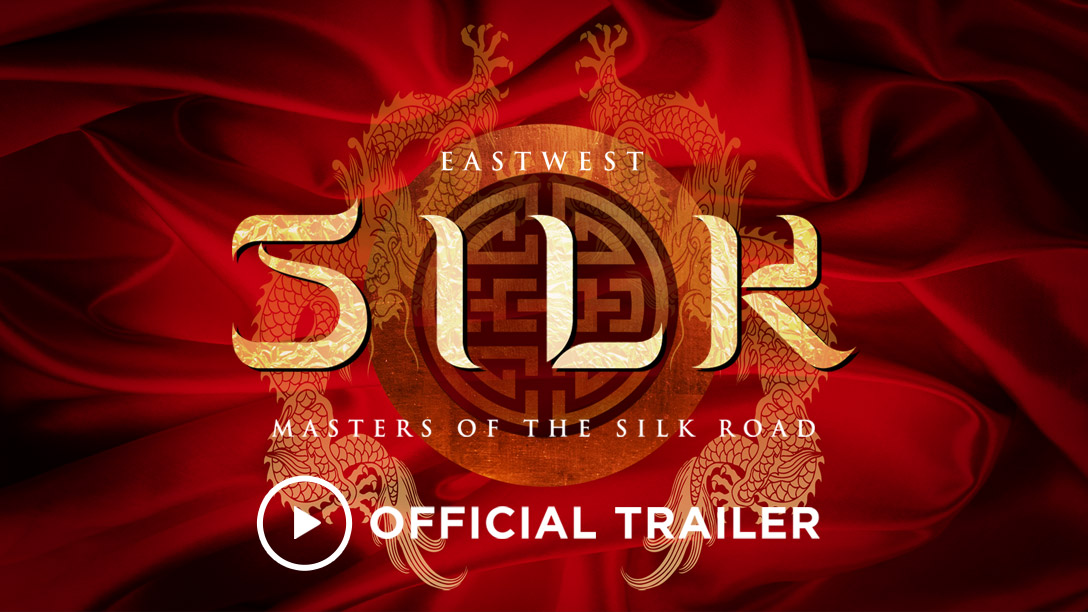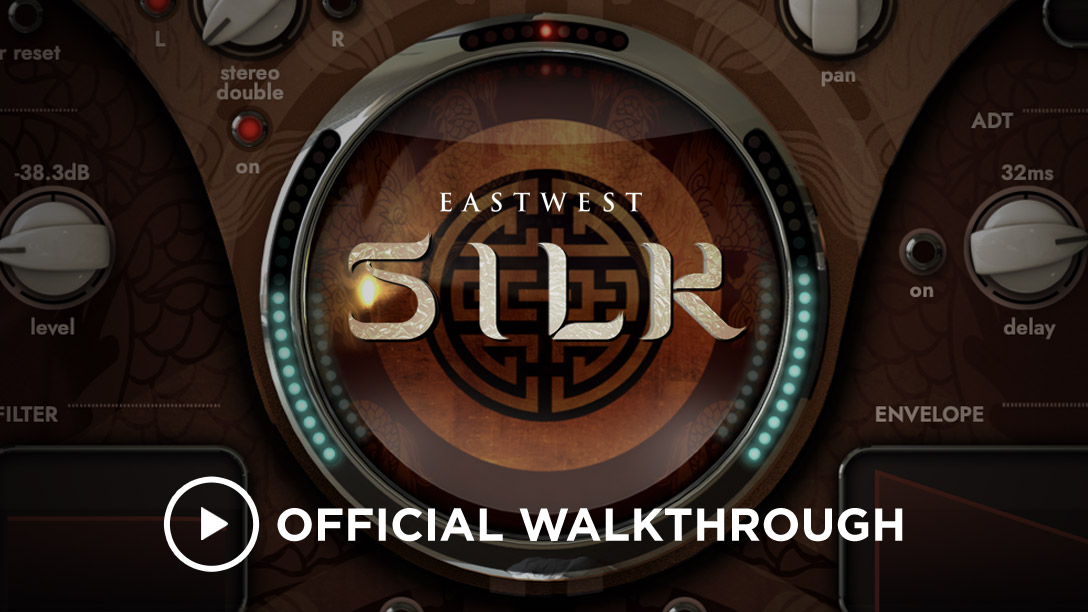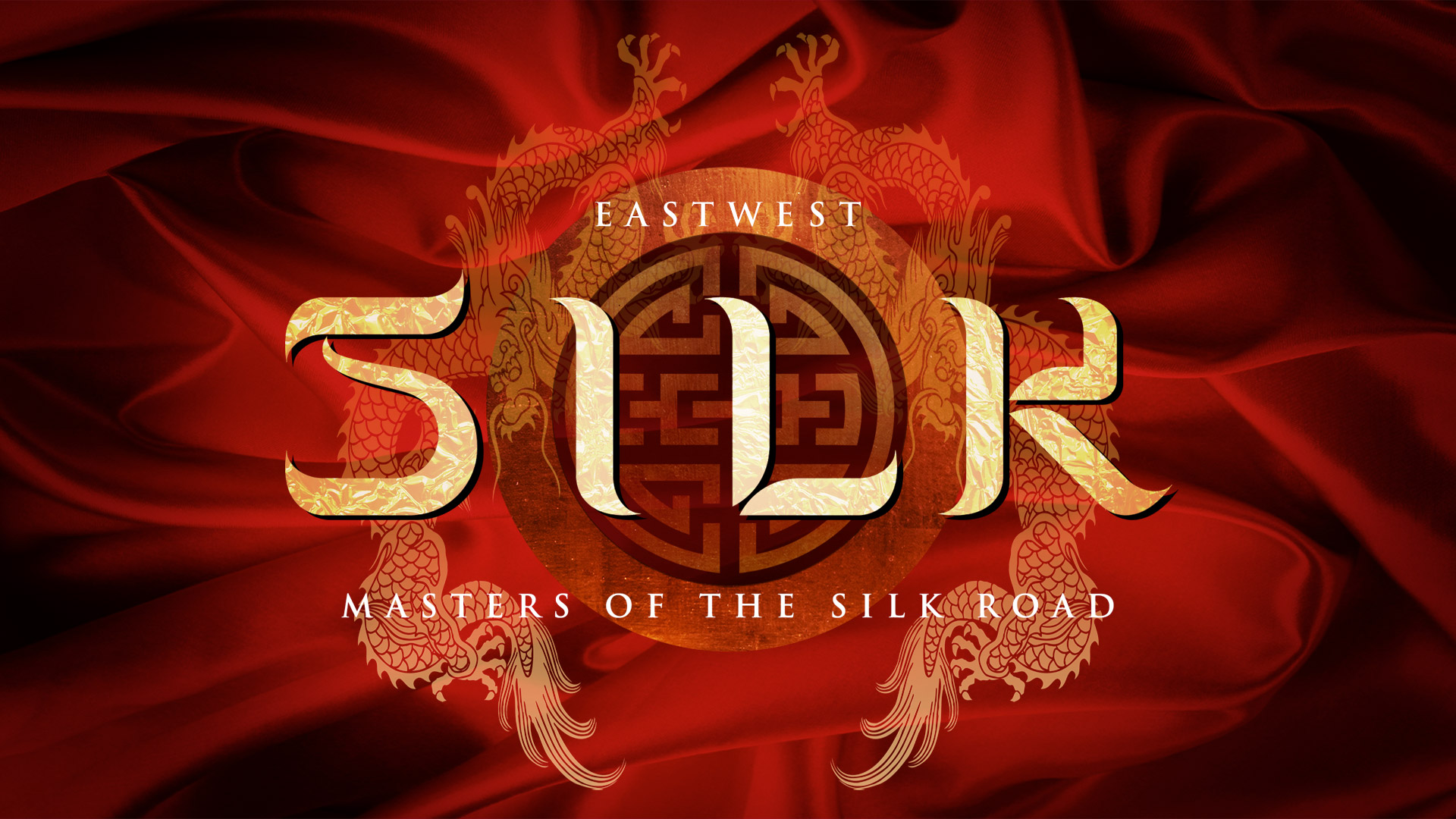
SILK
OVERVIEW
- Incredibly detailed Silk Road instruments from China, India, and Persia, part of the most ambitious world instrument collection ever created
- Created by award-winning sounds producers Doug Rogers and Nick Phoenix
- 25 GB instrument: 20 GB's of multi-samples and 5 GB's of authentic performances
- Recorded legato intervals for erhu, zhonghu, jinghu, electric cello, kemenche, duduk, 30-piece string section, dilruba, bansuri
- Master musicians recorded at EastWest Studios, using vintage Neumann microphones, Neve consoles and Meitner converters
- Now included in OPUS, along with individual downloads, custom keyswitches, and dozens of MIDI Tools and Mixer Effects
MASTERS OF THE
SILK ROAD
Effortlessly pull your listeners into the ancient world of your choosing. Produced by award-winning sounds producers Doug Rogers and Nick Phoenix, Silk features a large collection of world instruments from the lands of the Silk Road: China, India, and Persia. These bowed, plucked, and wind instruments were performed by master instrumentalists who have spent years perfecting their craft and were recorded using vintage Neumann microphones at legendary EastWest Studios. Using SILK's broad range of articulations, live-recorded legato and full phrases, you can quickly create an ensemble that sounds like it was recorded in a time and place far removed from our own.

The detail in the instruments is stunning, and the playability factor is high. In regarding to the TV/film/documentary world, this should be in every composer's collection.

AUDIOMIDI
UNIQUE, AUTHENTIC PERFORMANCES
This collection of instruments enables you to create subtle changes to the musical scale, carefully tailored to each instrument. Not only does this make your mockups sound far more authentic, but as producer Nick Phoenix says, “Silk is revolutionary in that the microtuning and scales actually teach users how to employ these sounds in an authentic way." Because Silk includes multiple recordings for every single note, including individually captured legato transitions, you’ll be able to quickly create convincing performances with minimal CC automation. However, you can also automate subtle aspects of the performance such as portamento time. We made sure every instrument captures the most expressive performances possible from each musician. To further extend the amount of variation on each note, SILK uses a script which selects one or more of three randomly selected options to keep the sound a little different on each repetition:
- Using the sample for a nearby note (for example, a half step higher or lower) and retuning it to the needed pitch.
- Starting the note a tiny amount before or after the specified start time.
- And detuning the sample a few cents (hundredths of a semitone) higher or lower.
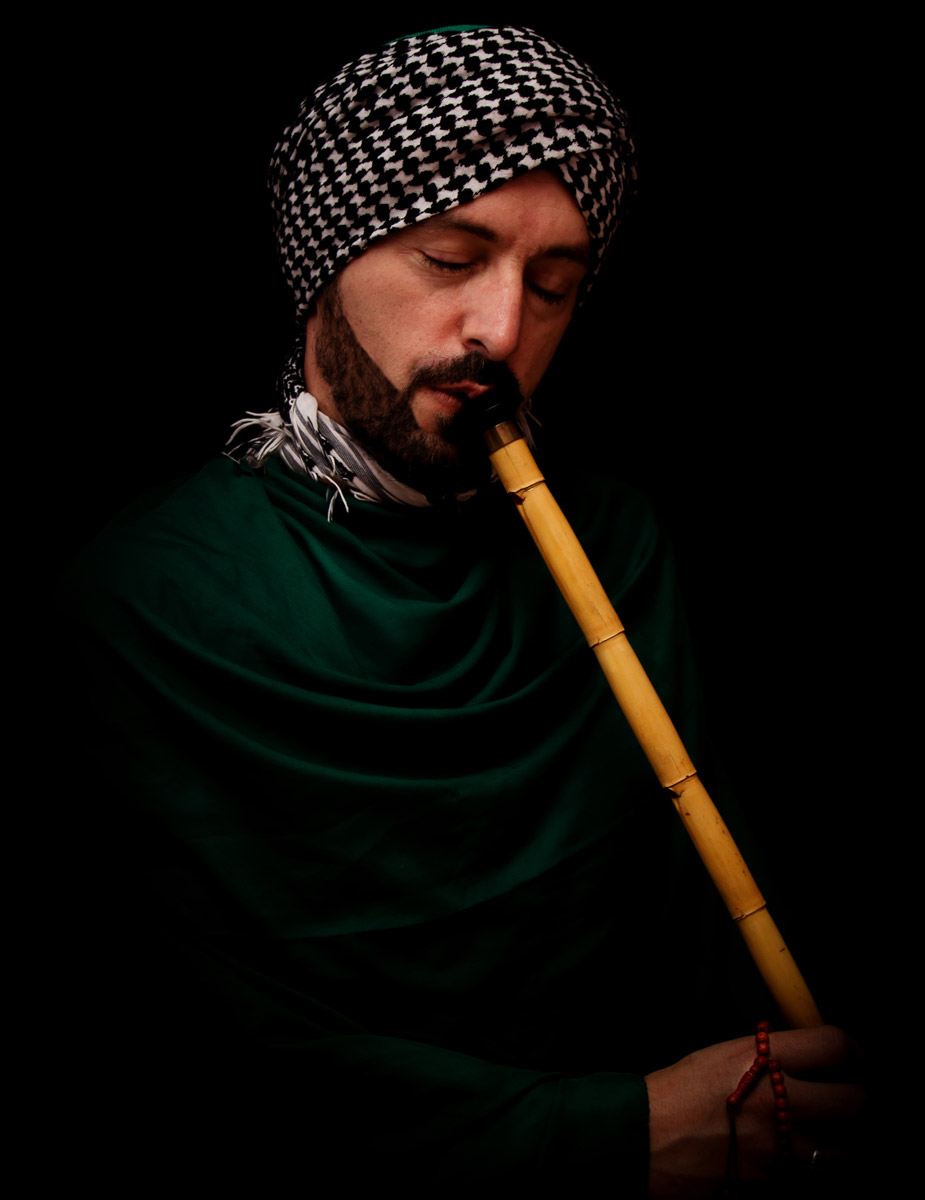

I’ve never heard Silk’s equal for the traditional string and wind instruments that it represents. If you want your pieces to exhibit the heat of the sun-baked Fertile Crescent or the chill of the snow-topped Himalayas, Silk is a composer’s dream.


INSTRUMENTS FROM CHINA
The haunting lament of the erhu. The gentle raindrop-like plucks of the pipa. The playful call of the dizi. Within moments, you have an entire ensemble of Chinese instruments ready to be performed. As the most extensive section in Silk, these Chinese instruments allow you to weave a beautiful tapestry of the Far East into your music.
ERHU
The erhu is a two-stringed bowed musical instrument, sometimes known in the Western world as the Chinese violin. Dating back to the Tang Dynasty (618 – 907), it is the most popular of the huqin family of traditional browed instruments and is used as solo instrument as well as in small ensembles and large orchestras.
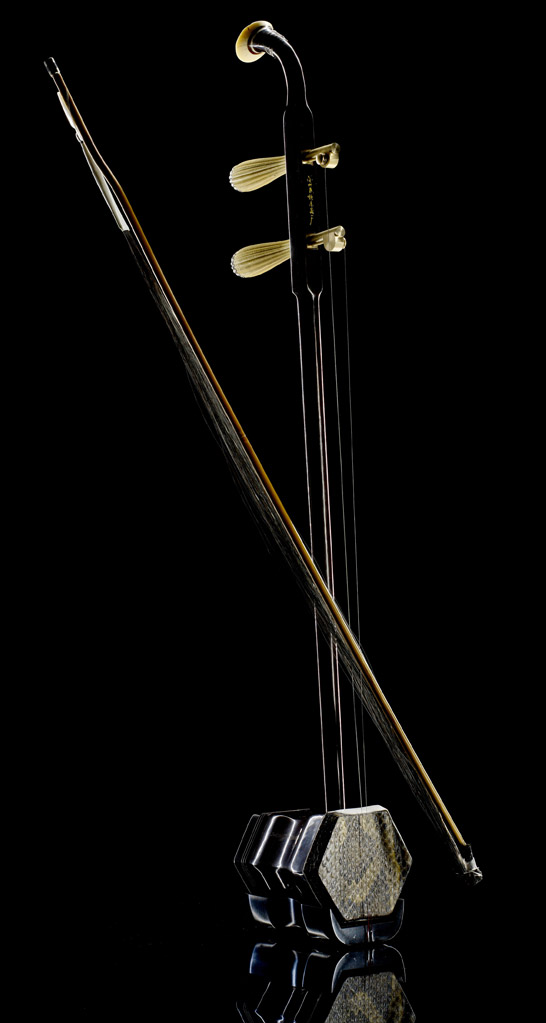
DIZI
The dizi is a Chinese transverse flute made of bamboo, widely used in many genres of folk music, as well as Chinese opera and the modern Chinese orchestra. Traditionally, the dizi has been popular among the common people of China, partly because it is simple to make and easy to carry. Includes large and small versions.
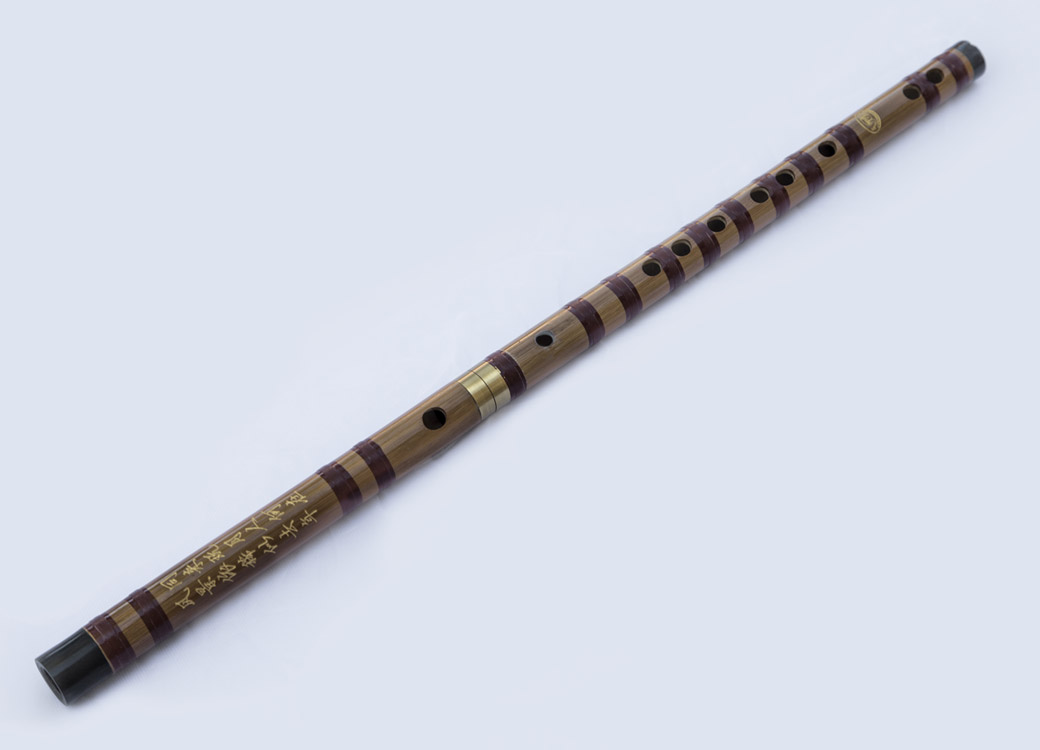
GUZHENG
The guzheng is a plucked string instrument that is part of the zither family. It is one of the most ancient Chinese musical instruments with a more than 2,500-year history and is considered one of the main chamber and solo instruments of Chinese traditional music.
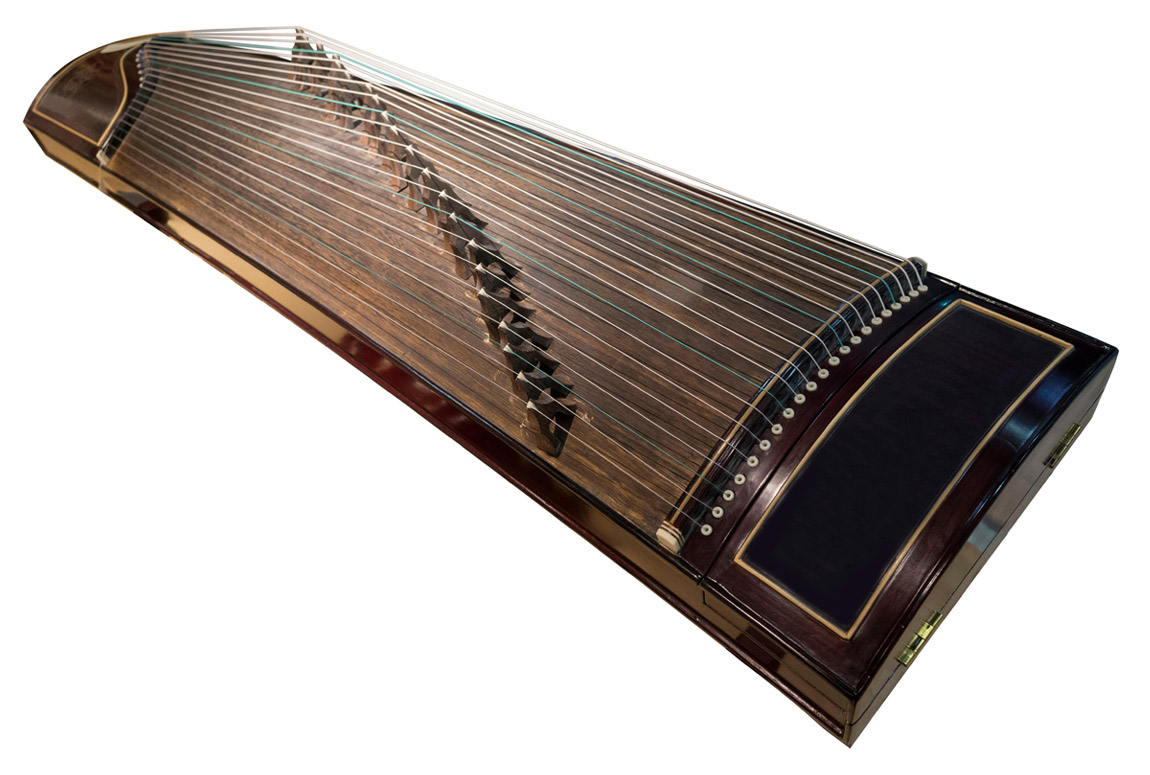
JINGHU
Principally used as an accompanying instrument for the Beijing opera, the jinghu is another important two-stringed fiddle in the huqin family. It was developed in the Qing dynasty (around 1790). The pitch of this instrument is the highest among all instruments in the huqin family.
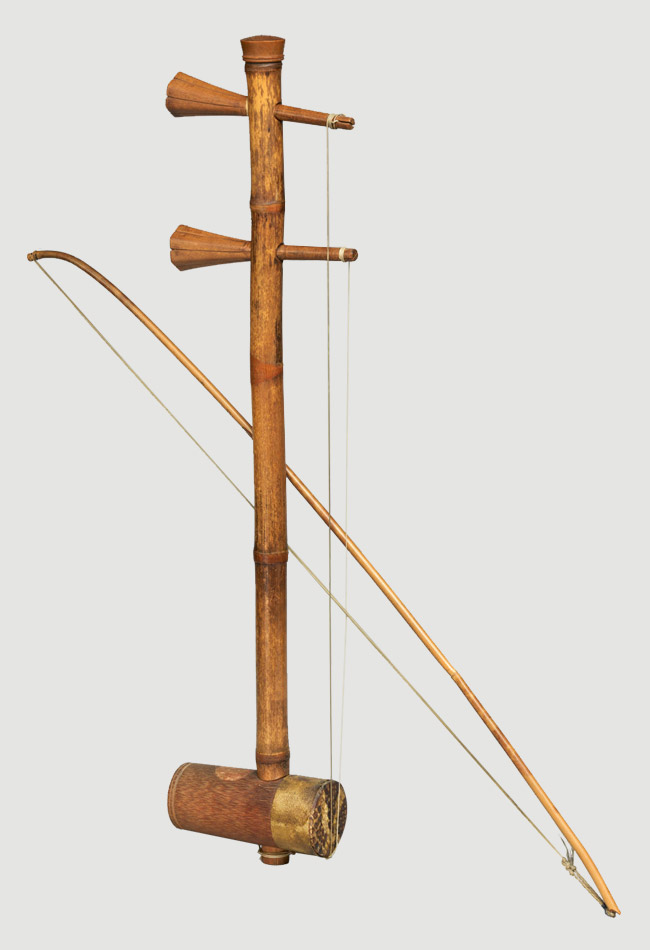
BAWU
Although shaped like a flute, the bawu is actually free single-reed wind instrument played horizontally. Originating from the Yunan province of southwest China, the Bawu has become a standard instrument throughout the country and is often featured in film scores and popular music recordings.

SUONA
The suona is a double-reeded horn with a conical wooden body, similar to that of the European oboe. It is an important instrument in the folk music of northern China, where it has long been used for outdoor festivals, military parades, wedding and funeral processions.
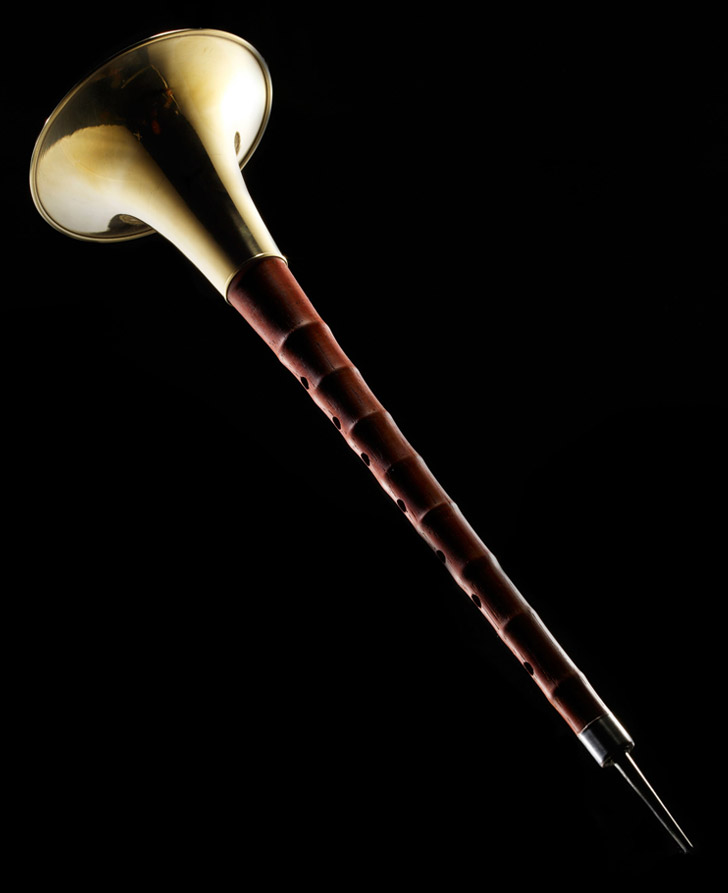
PIPA
Sometimes known as the Chinese lute, the pipa is a four-stringed plucked instrument with a pair-shaped body. It’s one of the most popular Chinese instruments and has been played for almost two thousand years, originating in the Han dynasty.
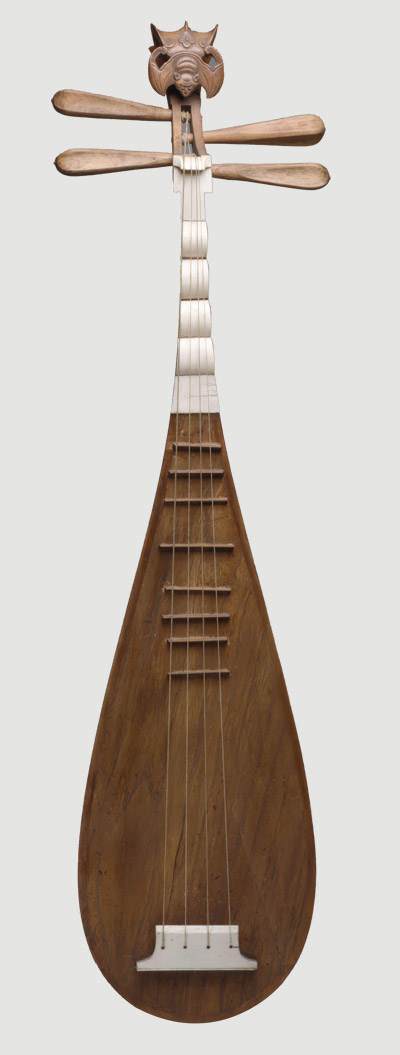
SHENG
The sheng is a mouth-blown free reed wind instrument consisting of vertical pipes, It is a polyphonic instrument, often used as a solo instrument or as an accompaniment for suona or dizi performances. Dating back to 1100 BCE, the sheng is one of oldest Chinese instruments.
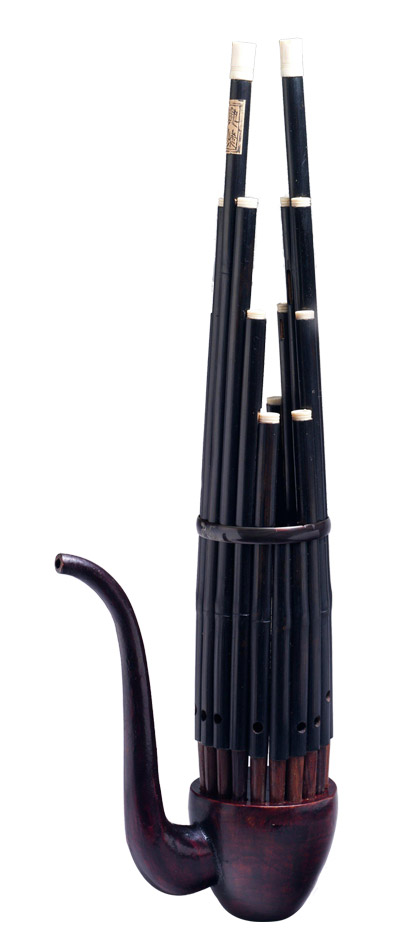
XIAO
The xiao is a Chinese vertical end-blown flute. It is generally made of dark brown bamboo. It is a very ancient instrument usually thought to have developed from a simple end- blown flute used by the Qiang people of Southwest China.
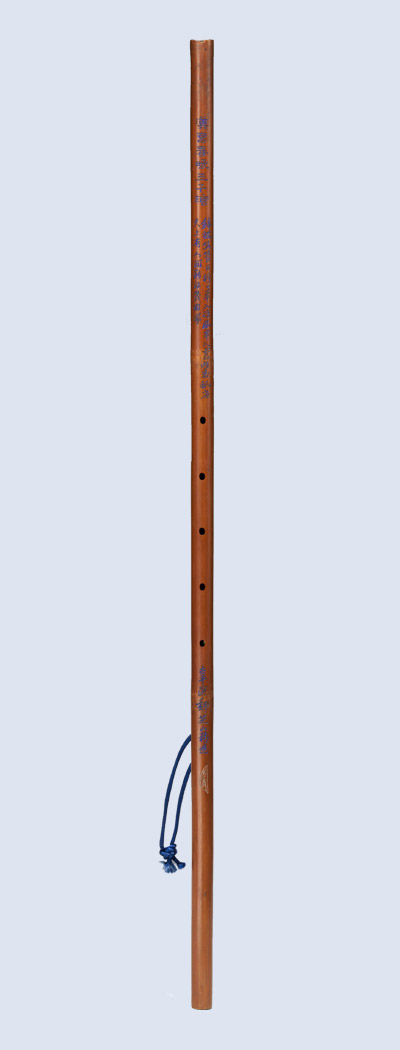
YANGQIN
The yangqin is a dulcimer played with bamboo mallets. It produces a high and tinkling timbre in its top registers, a soft, beautiful tone in the middle, and a strong, rich sound in the lower. It is a rather new instrument by Chinese standards, first arriving from the Middle East at the beginning of the Ming Dynasty (1368–1644).
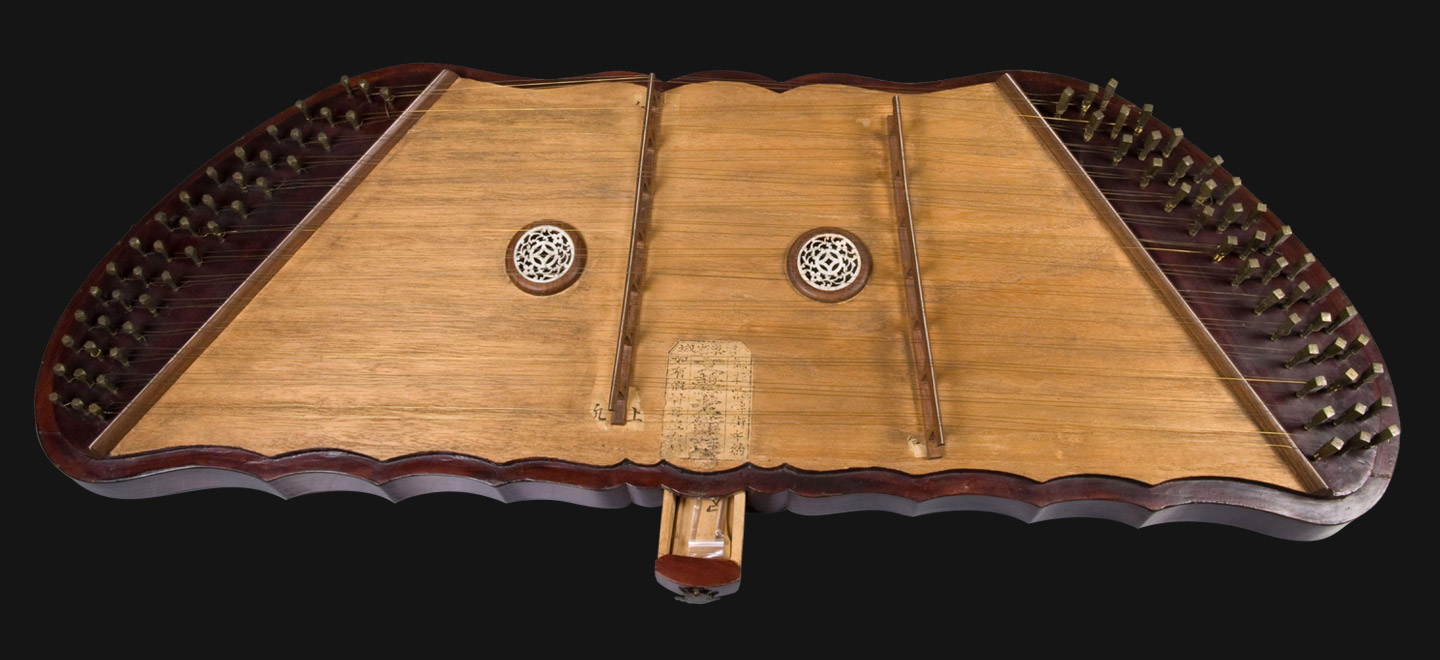
ZHONGHU
If we call the erhu the Chinese violin, the zhonghu is then the Chinese viola, where zhong means “middle.” It was developed from the erhu in the 1940s. Both the structure and performing skill of these two kinds of huqin are very similar, but the zhonghu has a deeper-sounding timbre.
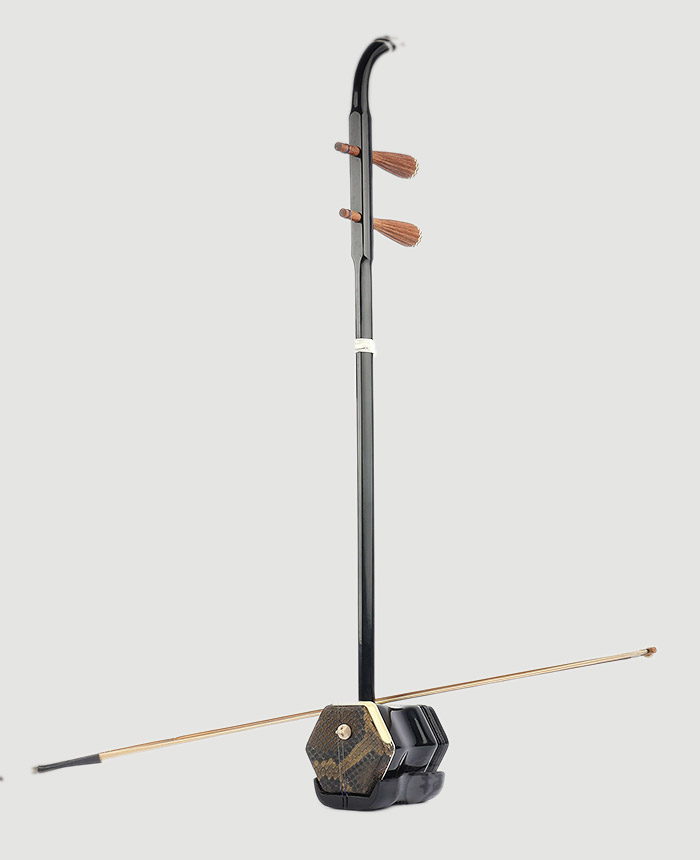

INSTRUMENTS FROM INDIA
From the unmistakable sound of the tanpura to the lyrical melodies of the dilruba, Silk allows you access a tremendous range of sounds from multiple iconic instruments of India. Whether you’re looking to create a raga or take advantage of Silk’s microtonal instruments, you have all the tools you need right here.
BANSURI
The bansuri is a common Indian flute with six or seven holes, typically made from bamboo or reed. It has been depicted in ancient Buddhist, Hindu, and Jain temples and is used in traditional folk music, although today it is found in Hindustani music and films.
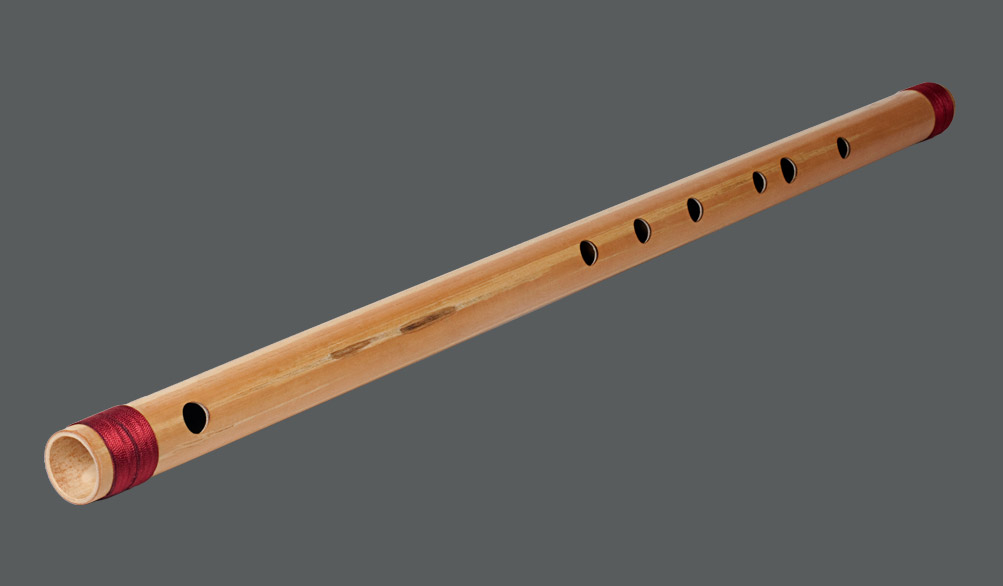
DILRUBA
The dilruba is bowed instrument, a cross between the sitar and sarangi. It is extremely close to the esraj and the mayuri vina. It was created over 300 years ago, although it was popularized in the west in the 1960 by acts like The Beatles in their psychedelic phrase.
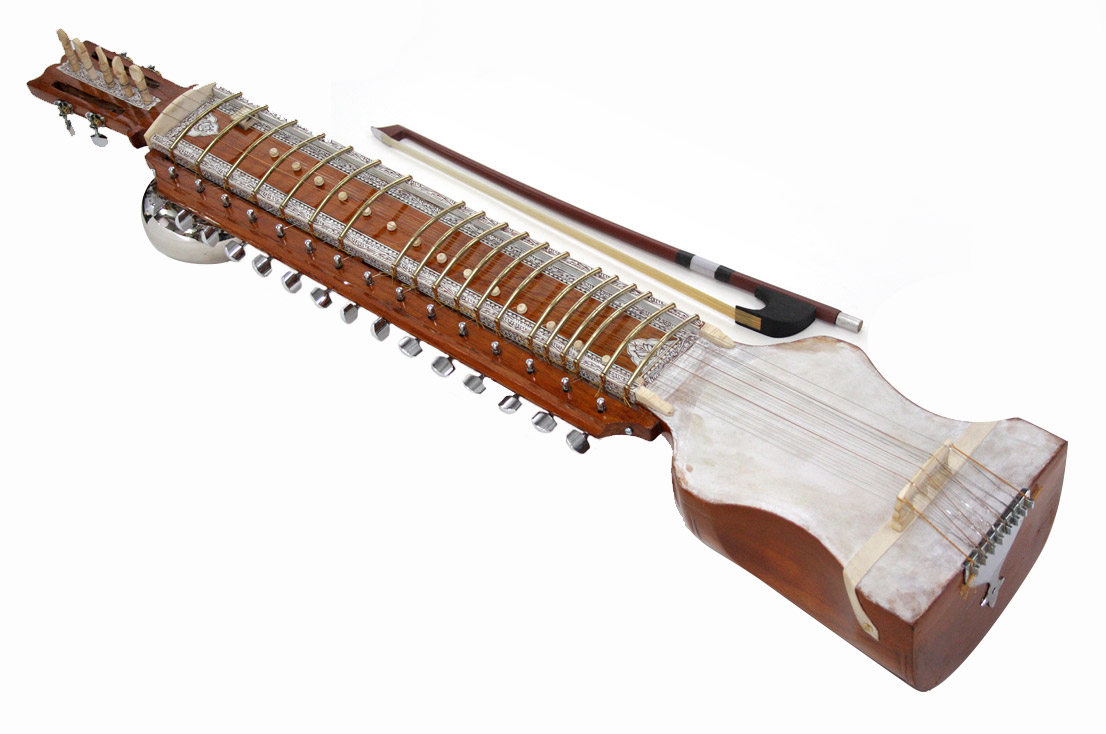
SAROD
The sarod is a stringed musical instrument, used mainly in Indian classical music. Along with the sitar, it’s the most popular and prominent instruments in Hindustani (north Indian) classical music. The sarod is known for a deep, weighty, introspective sound (in contrast to the sweet, rich texture of the sitar).

TANPURA
The tanpura is a drone instrument. It resembles a sitar except that it has no frets. The name “tanpura” is common in the north, but in south India it is called “tambura.” The tanpura is known for its very rich sound and is a favorite of Hindustani musicians.
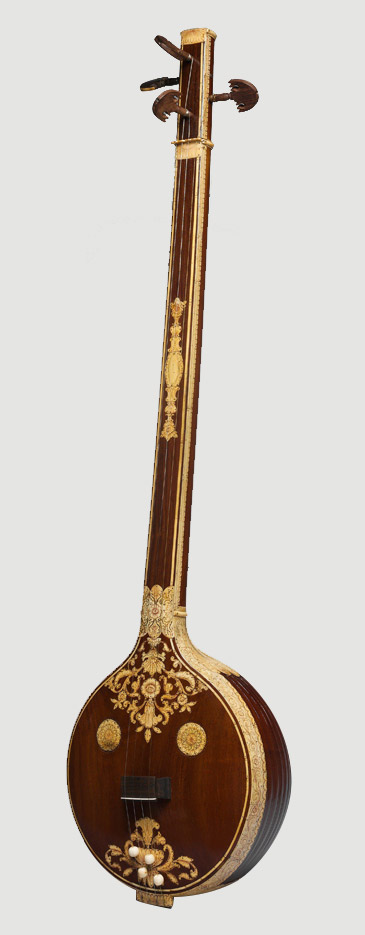

INSTRUMENTS OF PERSIA
Using Silk’s deeply sampled collection of ancient instruments from the Persian Empire, you can evoke the atmosphere of an ancient bazaar or even a sprawling desert with rolling sand dunes. Featuring such instruments as the duduk and qanun, the realism of these samples is unparalleled.
DUDUK
The duduk is a double-reed instrument with ancient origins, said to be from 1500 to 3000 years old. Armenian duduks are mainly made from aged apricot wood. In modern times, duduk music has been used in a number of films, such as 2000’s Academy Award Best Picture winner Gladiator.
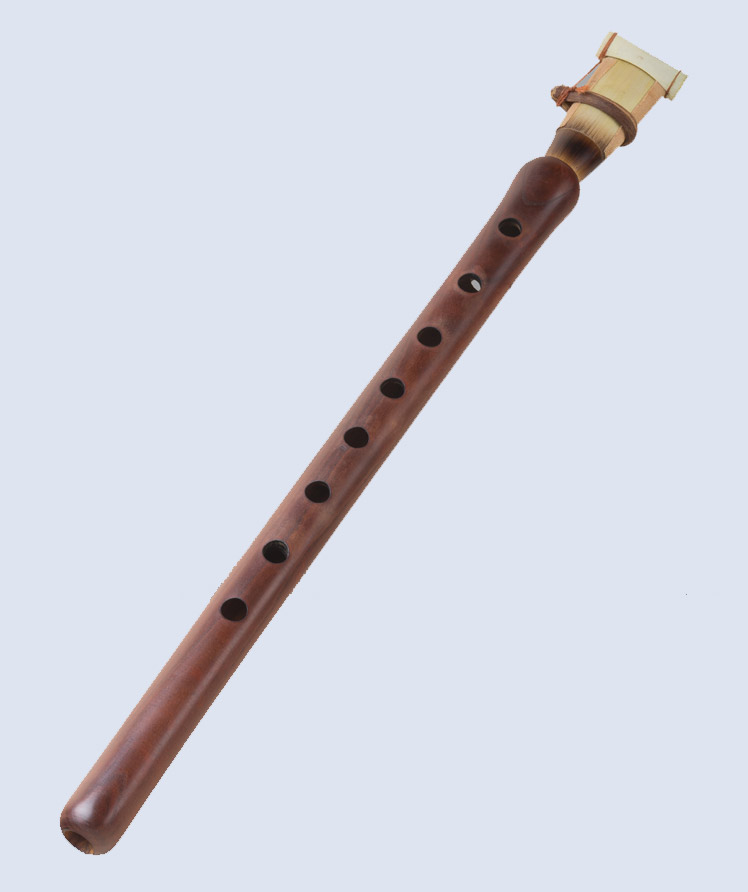
ELECTRIC CELLO
The electric cello is a type of cello that relies on electronic amplification to produce sound. Many electric cellos have bodies modeled after acoustic cellos, while others abandon the design completely, opting for a totally new body shape. It’s popular in modern day Middle Eastern music.
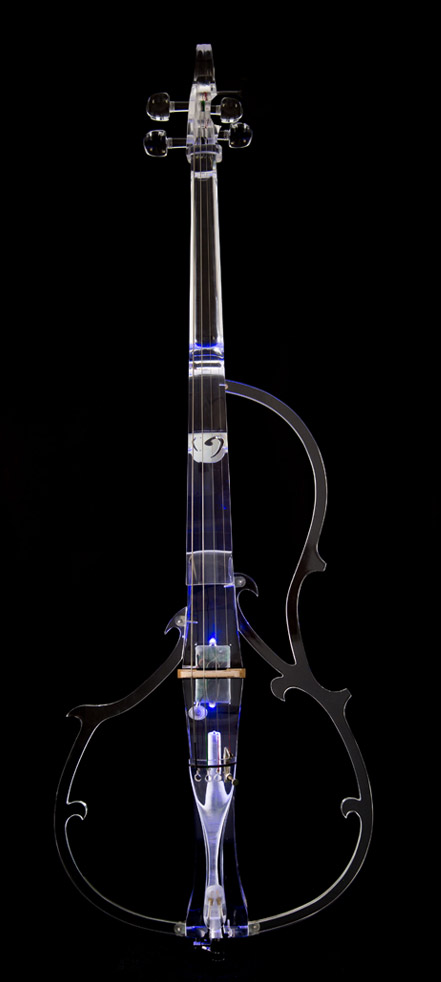
KEMENCHE
A kemenche is a bottle-shaped, 3-stringed type of from the Black Sea region of Asia Minor. In Greece and the Pontian Greek diaspora, it is known as “kementzes” and in the last few decades as “lyra.”
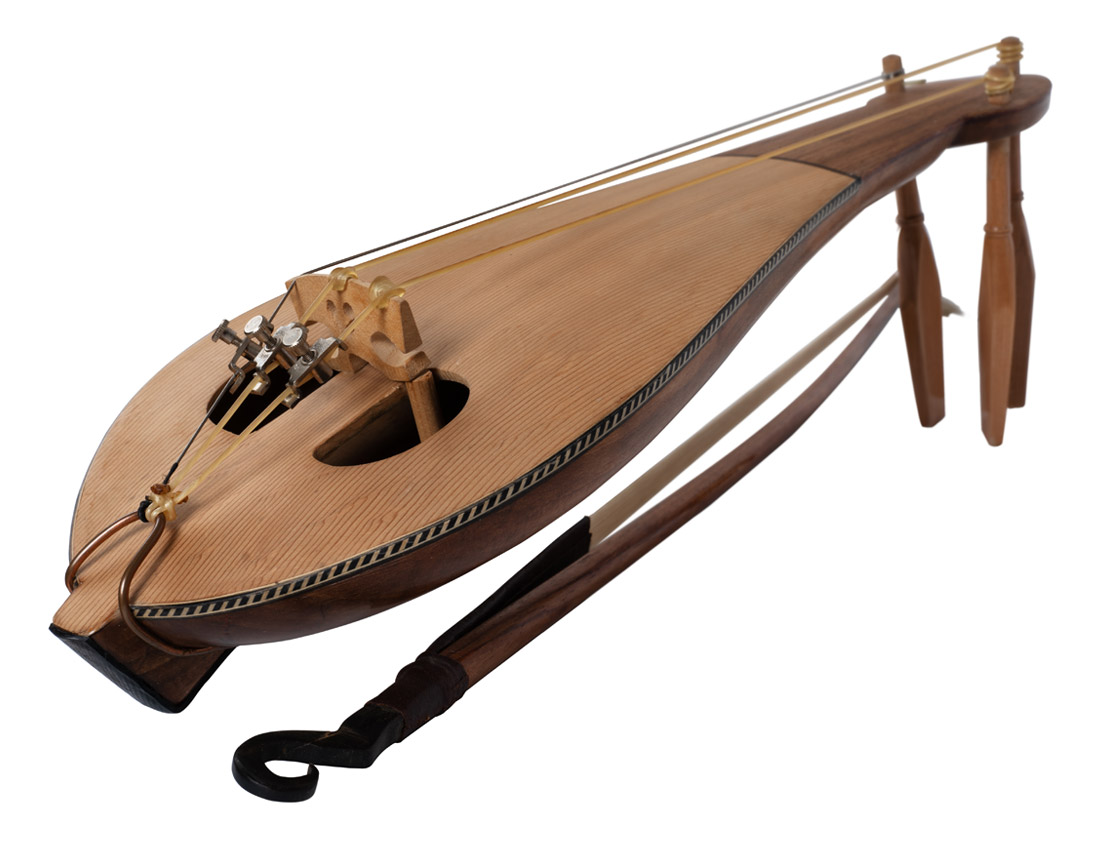
NAY FLUTE
The nay is an end-blown flute that figures prominently in Persian, Turkish and Arabic music. In some of these musical traditions, it is the only wind instrument used. It is a very ancient instrument, with depictions of nay players appearing in wall paintings in the Egyptian pyramids.

QANUN
The qanun is a string, zither instrument played either solo or as part of an ensemble, in much of the Middle East. It is thought to trace its origins to Ancient Greece, or even to the earlier Minoan or Mycenaean times between 3000 and 1600 BCE.
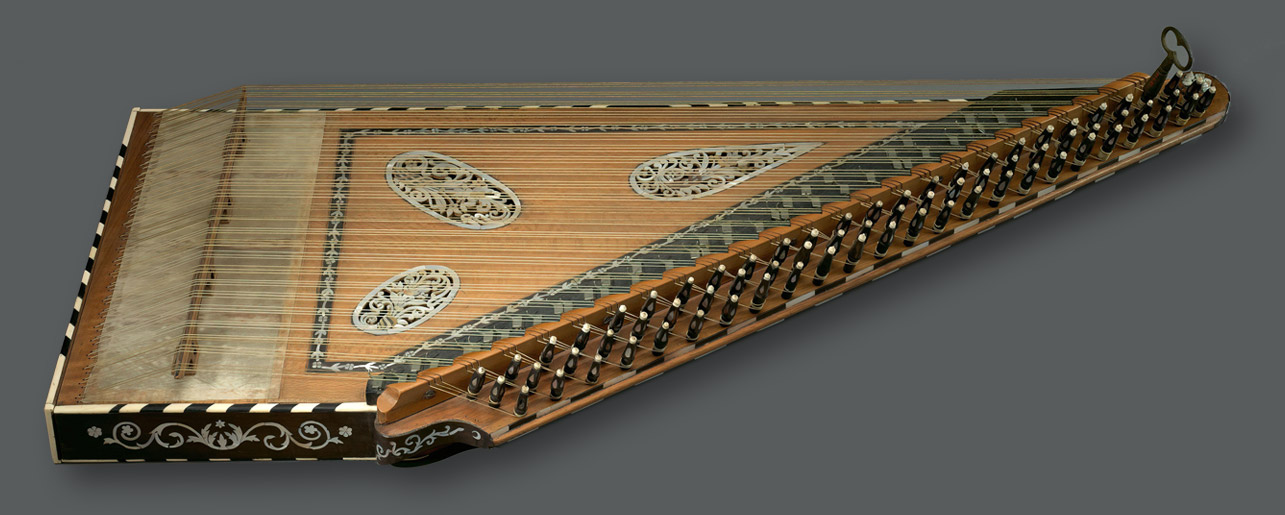
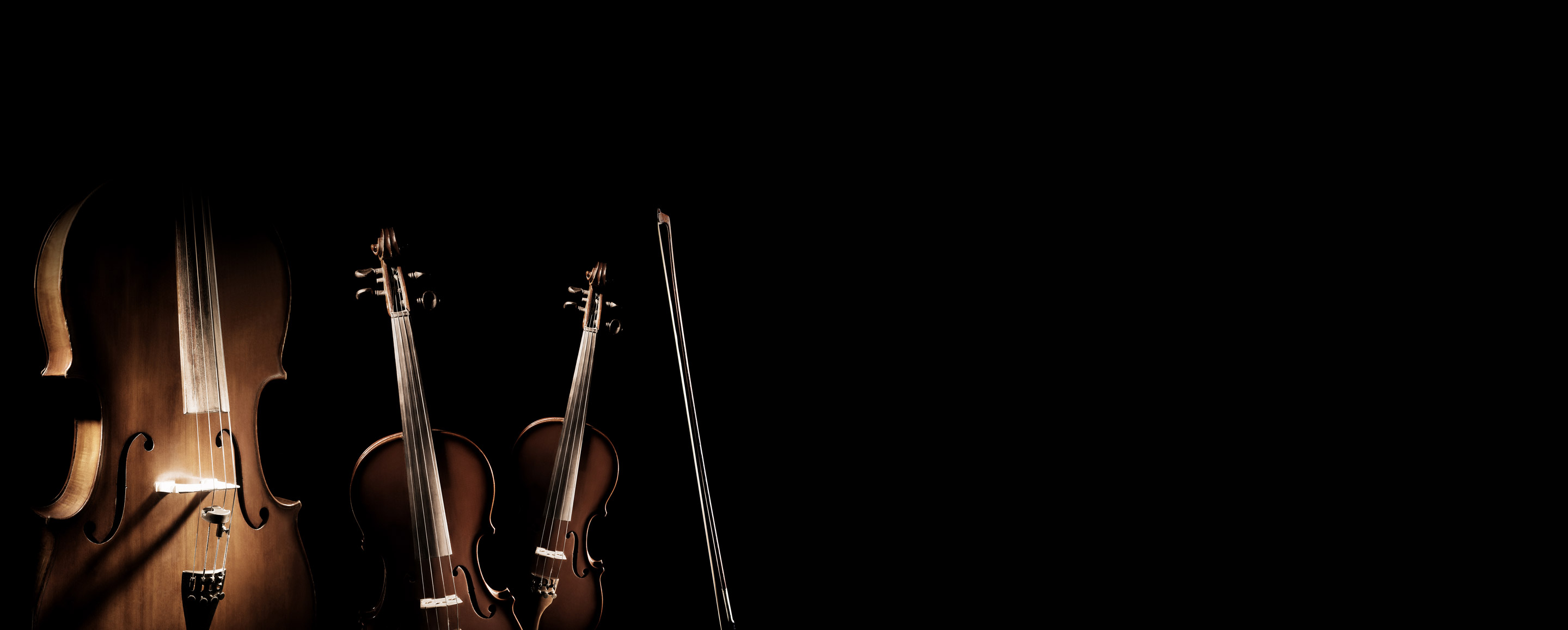
30 PIECE STRING SECTION
European strings were first introduced to the Middle East during Napoleon’s failed attempt at capturing Egypt in 1798. Featuring a different tuning style, characteristic performance techniques are very decorative with melismas, slurs and slides, trills, wider vibrato, and double stops.
TAR
The tar is a long-necked instrument with a pronounced waist. The word “tar” itself means “string” in Farsi. One of the most important instrument in Persian classical music, it has also been adapted into the cultures of Azerbaijan, Armenia, Georgia, and the Caucasus.
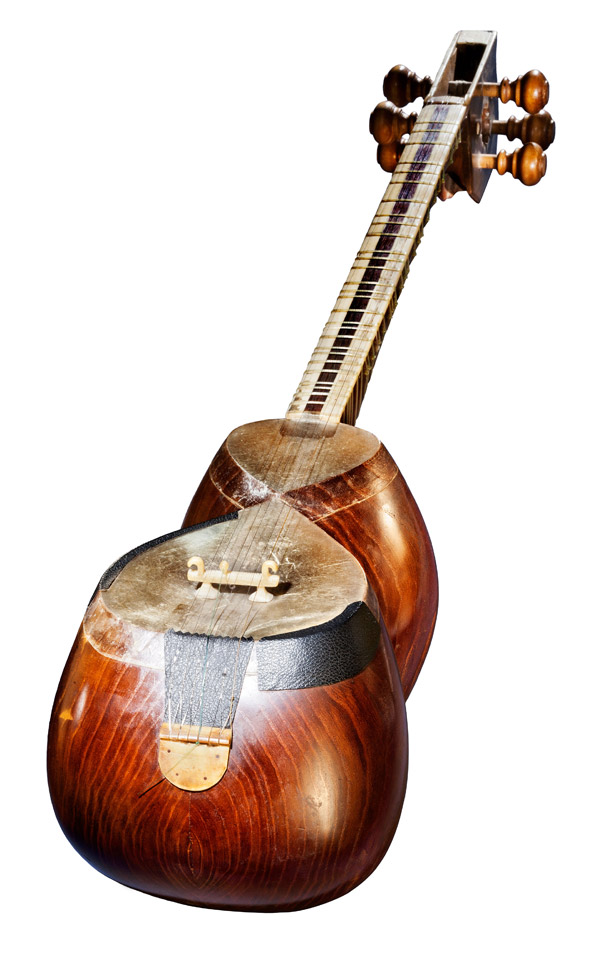
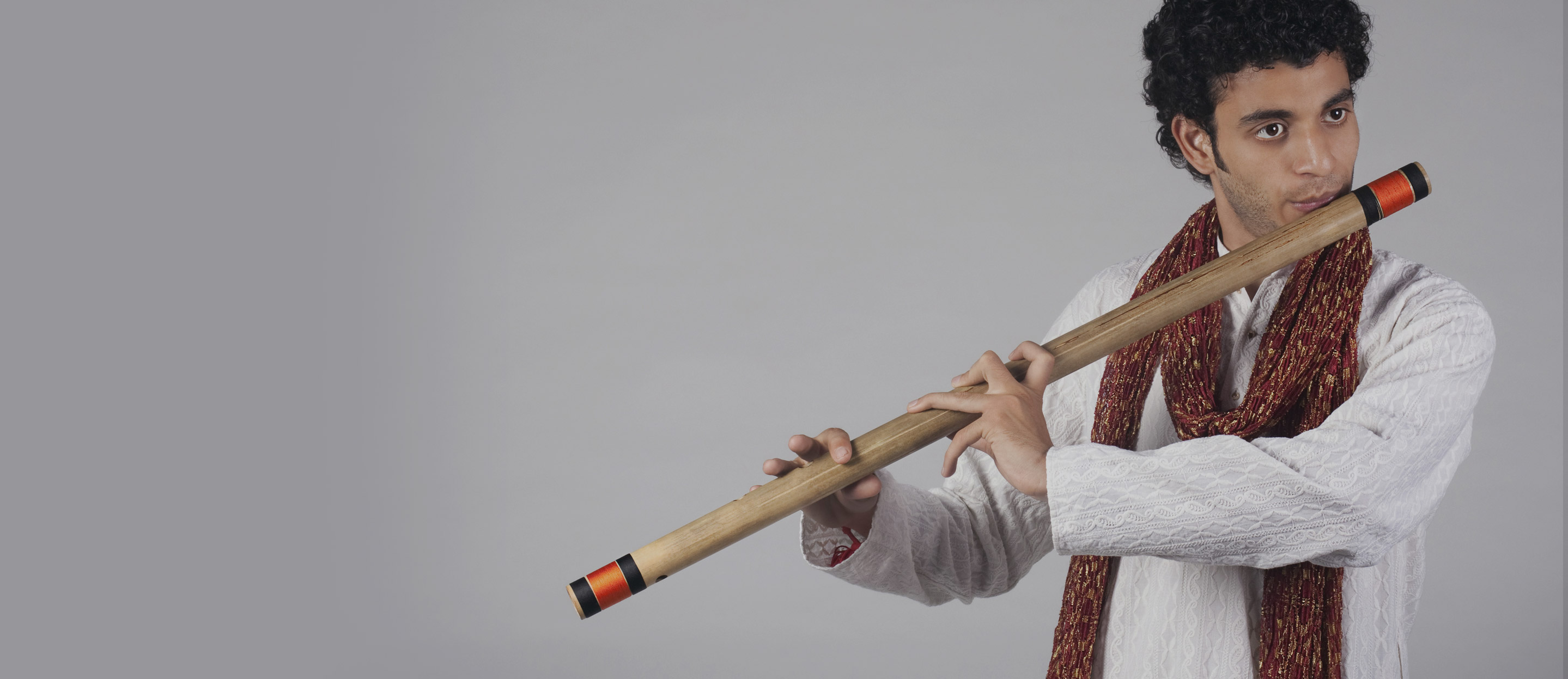
The sounds themselves are a delight – recorded at EastWest’s beautiful studio, they’re clear, lush, impeccably edited, and mapped together beautifully. Fantastic! Give Silk a listen and be carried away.

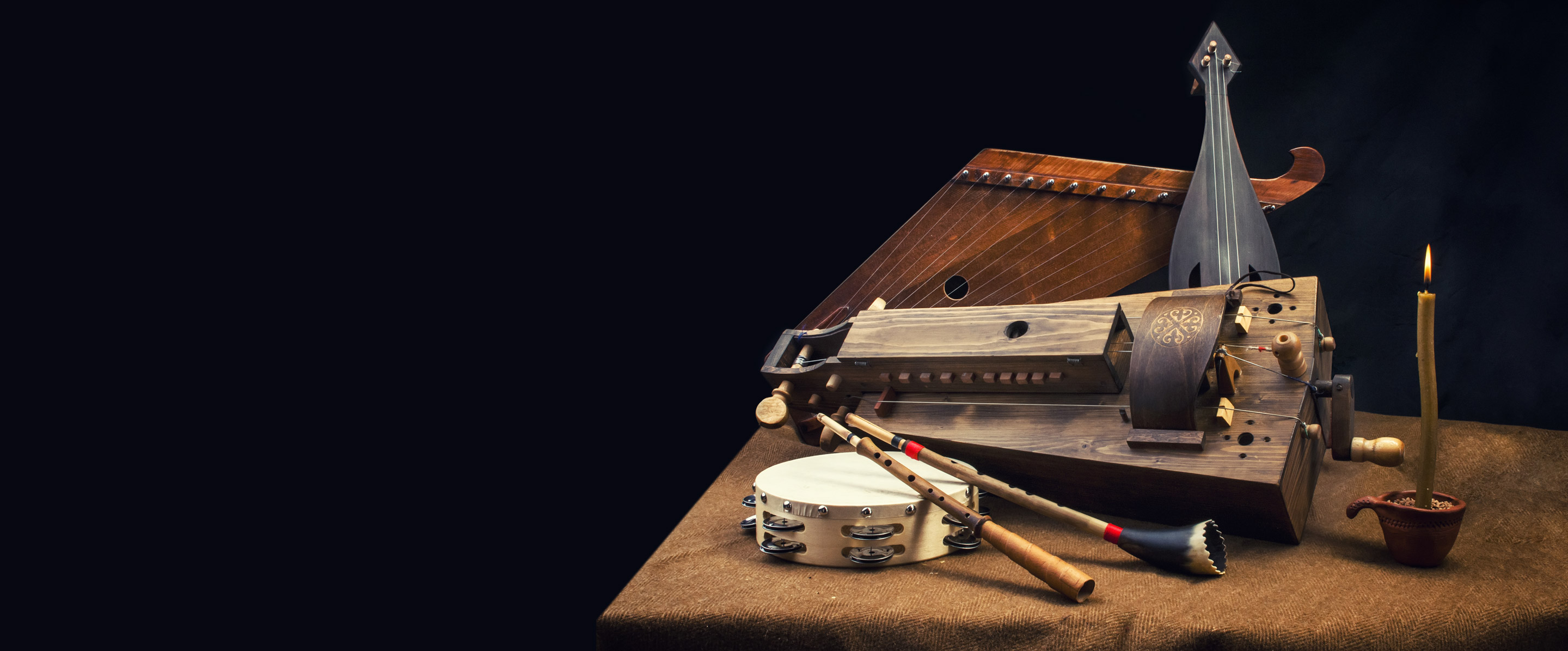
THE GREATEST COLLECTION OF WORLD INSTRUMENTS
EVER CREATED
Silk is just the start of journey. Together with RA, Gypsy, StormDrum 2 and StormDrum 3, you’ll have the most comprehensive collection of sampled world instruments available in the industry.
Get Silk and all 70+ collections that include over 42,000 instruments with ComposerCloud+
VIDEOS
MANUAL
SYSTEM
REQUIREMENTS
Below are the minimum and recommended hardware and software specifications for using Opus on Windows and MacOS systems.
|
MINIMUM SYSTEM
|
RECOMMENDED SYSTEM
|
The chart below outlines the MacOS and Windows 64-bit operating systems and sequencers that are officially supported and fully tested with the latest version of Opus. Please note that while most Sequencers / DAWs are VST 2, VST 3, AU and AAX plug-in format compatible, only those listed in the chart below are officially supported.
| Product | Version | MacOS (10.13+) | Windows 10 |
|---|---|---|---|
| EW Play 6 Stand-Alone | 6.0+ | YES | YES |
| EW Opus Stand-Alone | 1.0+ | YES | YES |
| Ableton Live | 10.0+ | YES | YES |
| Apple Logic Pro | 10.0+ | YES | - |
| Apple Garageband | 10.3+ | YES | - |
| Avid Pro Tools | 2018.1+ | YES | YES |
| Bitwig Studio | 3.0+ | YES | YES |
| Cockos Reaper | 6.0+ | YES | YES |
| Image-Line FL Studio | 20+ | YES | YES |
| Motu Digital Performer | 9.0+ | YES | YES |
| Steinberg Cubase(1) | 9.0+ | YES | YES |
| Steinberg Nuendo(1) | 8.0+ | YES | YES |
| Presonus Studio One | 4.0+ | YES | YES |
| VSL Vienna Ensemble Pro | 6.0+ | YES | YES |
| Acoustica Mixcraft | 10.5+ | - | YES |
| Notation Software(2) | Version | ||
|---|---|---|---|
| Avid Sibelius | 2018.1+ | YES | YES |
| MakeMusic Finale | 25.0+ | YES | YES |
| Steinberg Dorico | 3.0+ | YES | YES |
- (1) VST3 usage is recommended
- (2) Sibelius / Finale / Dorico notation programs work with Opus, but do not support the full feature set of some Opus/Play Libraries, such as those that use WordBuilder. Please contact support for details.
Silk
Do You Want to Buy This Product or Get All Products With ComposerCloud+?
- Includes perpetual license to Silk
- Includes EastWest Instruments
- Includes EastWest Opus Player, 46 Mixer Effects and MIDI Tools
Free For 14 Days, then $19.99/mo
- Includes Silk and all 70+ EastWest releases
- Includes 43,776 EastWest Instruments
- Includes EastWest Opus Player, 46 Mixer Effects and MIDI Tools
- Includes all new product releases
Instant Savings:
Was:
![]()
Pay over 3, 6, or 12 months starting at $23 per month
Check your purchasing power
Delivered In Minutes!
Delivered by download. You can download individual instruments in seconds.
Software Is Not Returnable
Sorry, Software cannot be returned once it has been delivered. Contact our support if you need any help with ensuring compatibility or finding the right version.
WHAT'S
INCLUDED?
- Incredibly detailed Silk Road instruments from China, India, and Persia, part of the most ambitious world instrument collection ever created
- Created by award-winning sounds producers Doug Rogers and Nick Phoenix
- 25 GB instrument: 20 GB's of multi-samples and 5 GB's of authentic performances
- Recorded legato intervals for erhu, zhonghu, jinghu, electric cello, kemenche, duduk, 30-piece string section, dilruba, bansuri
- Master musicians recorded at EastWest Studios, using vintage Neumann microphones, Neve consoles and Meitner converters
